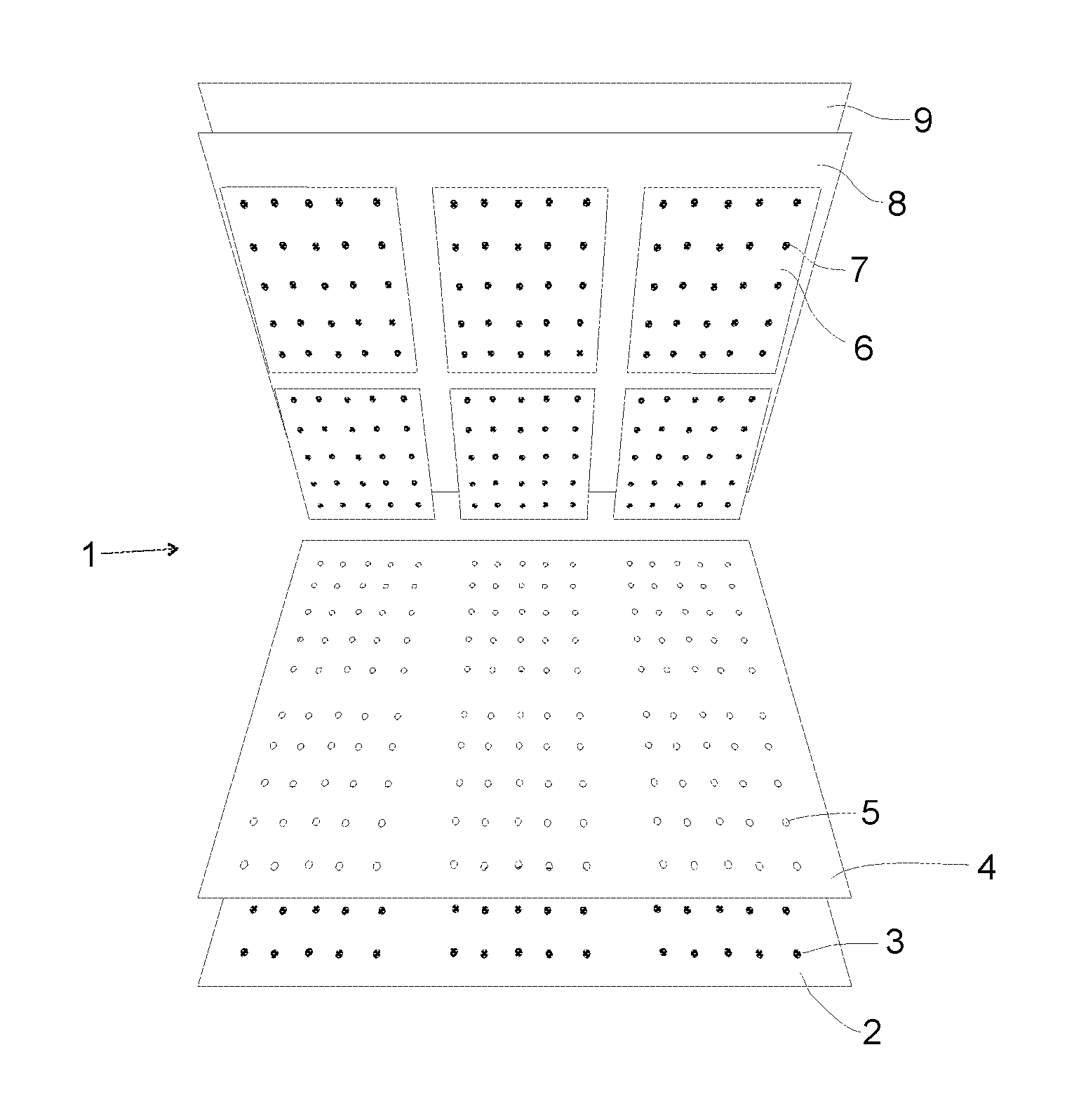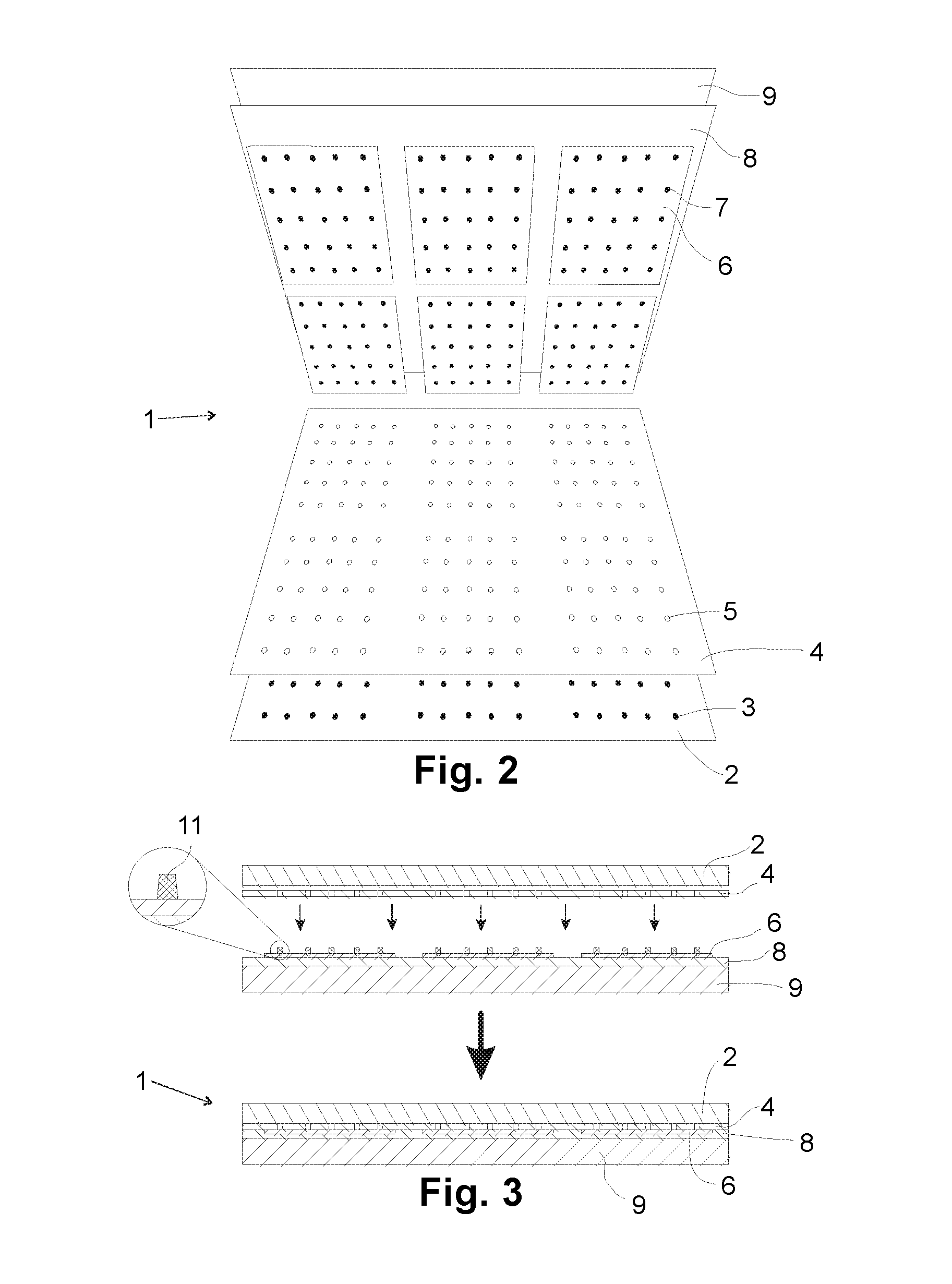Photovoltaic module assembly
a photovoltaic module and photovoltaic energy technology, applied in photovoltaic energy generation, coatings, instruments, etc., can solve the problems of large amount of manual labor, large area printers used for printing to the connecting pads of the back sheet cannot be positioned accurately over the whole back sheet, and difficulty in fully automating, so as to reduce the area of the isolated pad, reduce the size of the contact pad, and reduce the effect of toleran
- Summary
- Abstract
- Description
- Claims
- Application Information
AI Technical Summary
Benefits of technology
Problems solved by technology
Method used
Image
Examples
Embodiment Construction
[0020]Reference will now be made in detail to the exemplary embodiments of the present invention, examples of which are illustrated in the accompanying drawings.
[0021]The photovoltaic module according to the present invention is an assembly comprising several photovoltaic cells that are connected together to increase the amount of power when exposed to light. The assembly usually comprises laminating the components to form a flat and rigid structure. An example of the photovoltaic module is a large flat sandwich structure, comprising a back sheet, conductive circuit elements to which the cells are connected, an encapsulant layer in the form of a sheet of encapsulant material to produce adhesion, mechanical protection and electrical insulation between the layers, photovoltaic cells electrically connected and arranged to be an array, another layer of insulation, typically in the form of another sheet of encapsulant, and the transparent front sheet such as a glass plate. In one example...
PUM
| Property | Measurement | Unit |
|---|---|---|
| size | aaaaa | aaaaa |
| size | aaaaa | aaaaa |
| conductive | aaaaa | aaaaa |
Abstract
Description
Claims
Application Information
 Login to View More
Login to View More - R&D
- Intellectual Property
- Life Sciences
- Materials
- Tech Scout
- Unparalleled Data Quality
- Higher Quality Content
- 60% Fewer Hallucinations
Browse by: Latest US Patents, China's latest patents, Technical Efficacy Thesaurus, Application Domain, Technology Topic, Popular Technical Reports.
© 2025 PatSnap. All rights reserved.Legal|Privacy policy|Modern Slavery Act Transparency Statement|Sitemap|About US| Contact US: help@patsnap.com



